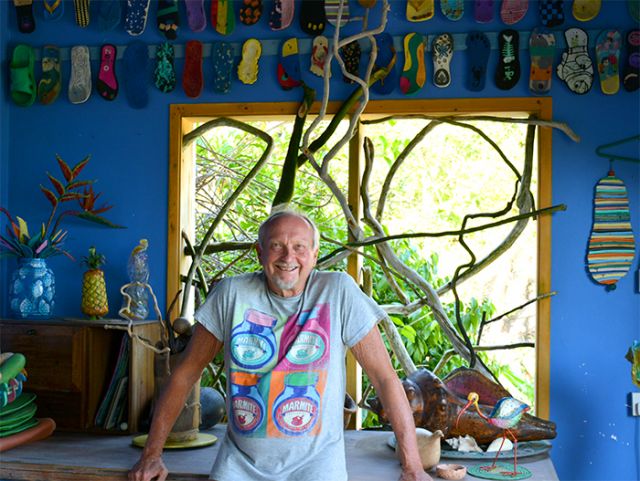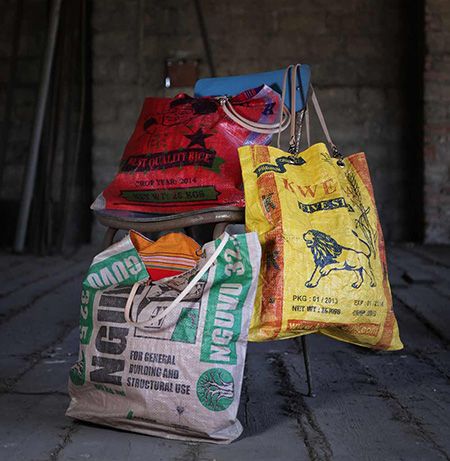
ENVIRONMENT
19-04-2017 di redazione

Downstream from an ecological disaster brewing a continent away, these placid waters are bearing the brunt of a foot-born problem: your flip flops.
The Japanese call them zoris. They're thongs in Australia. Tsinelas in the Philippines and chinelos in Brazil. Archaeologists have even discovered an Ancient Egyptian pair made from leather, dating from approximately 3,500 years ago.
"Over three billion people can only afford that type of shoe," says Erin Smith of Ocean Sole, a conservation group and recycling collective. "They hang on to them, they fix them, they duct tape them, mend them and then usually discard them." The average lifespan of a flip flop is two years, she adds.
They're ubiquitous, and the modern day synthetic rubber flip flop is not going away. In fact, tons of them are washing up on the East African coast.
Reports suggest that at least eight million tons of plastic enters our oceans every year. By 2050, there could be more plastic than fish in the seas by weight, according to one estimate.
The majority of debris visiting Kenya comes from Asia, India and China, Smith claims, and the ocean current spreads it all along the East African coast, drifting south. Some will eventually leave the Indian Ocean and make it as far as South America.
"We are actually receivers of pretty much the rest of the emerging world's marine pollution," she argues. And a significant quantity of the pollution which appears on East Africa's beaches come from discarded flip flops -- approximately 90 tons a year, says Ocean Sole.
Kenya is not an entirely innocent party, however. Smith says one company produces 100,000 flip flops a day, many of which, with grim inevitability, also enter the waterways. Before they reach the ocean they're already a problem. Smith reports that in Kibera, one of Nairobi's largest slums, a back-up of discarded flip flops once blocked the area's clean water supply.
They're not only an eyesore, but a direct health hazard, and with no hope of biodegrading.
"Our founder Julie Church back in the 90s discovered an entire beach ... was just covered in flip flops," Smith says. "What she saw were not just dead fish that had been trying to eat in their natural habitat, but turtles unable to come up on to land and actually hatch.
"[The pollution] started to kill the plant life, it started to kill the crabs on the sand ... we have deserted beaches that used to have communities there, that used to be able to fish, and the whole ecosystem has been ruined by this massive increase in marine pollution."
Matilda Mathias, a debris collector from the "Blue Team" in Watamu, cites the benefits to the tourist industry when the beaches are clean, and says "we also benefit from the money."
Most of the detritus is recycled, some is reused, but in the case of flip flops, they're upcycled. Ocean Sole has trained a team of 40-or-so artisans in a workshop in Nairobi to craft sculptures from these pre-owned, unloved objects into a source of income.
Importing flip flops from recycling crews along the East Coast and from as far away as Zanzibar, Smith estimates the Ocean Sole team can repurpose approximately 800,000 flip flops a year.
Not all sculptures are equal, ranging from handheld creations to an 18-foot life-sized giraffe, but Smith says between its programs Ocean Sole aims to produce a million products a year.
The sculptures are a colorful reminder of the damage being done to our planet; a statement shipped to Rome Fashion Week in 2008, the Swedish Cultural Museum in 2010, London Zoo in 2013 and placed in the hands of Pope Francis in 2015.
Seven hundred people are involved in Ocean Sole's work, and Smith says there's interest in exporting the model from as far and wide as Mexico and Nepal. And there's little chance artisans will run out of raw material any time soon as long as our flip flop habit remains.
"I think it's time for us to start looking for an alternative shoe, or an alternative material, to fit that kind of fashion need," argues Smith. "Our products need to evolve."
German sportswear company Adidas is already experimenting with renewable materials. Its sneaker collaboration with Parley for the Oceans, using illegal deep-sea gillnets and recycled ocean plastic, won praise among the design community last year and was award-nominated.
Moreover, Adidas is also experimenting with a material it calls AMSilk, creating a biodegradable shoe packaged along with an enzyme solution, so that owners can dissolve their sneakers when they're done with them.
It may be a while before this technology finds its way to three billion people's feet. In the meantime, Ocean Sole is prepared to remind you just how impractical your flip flops are and not just for walking backwards.
(source CNN)
PEOPLE
di redazione

We live in a historical period where art, in addition to the intrinsic and historical value as bearer of beauty and stimulator of the mind, assumes an important social role; it fights for the protection of the environment and community...
CURIOSITY
di redazione

Virgola is one of the most well-known and important Italian brands in the hairdressing arena and its historical founder and owner Rinaldo Rampon is a love of Kenya.
For years he has watched Watamu and his beaches, but not only.
PLACES
di redazione

Put a magnificent structure that looks like a tower designed by Gaudi in the middle of the virgin forest of Watamu, about a hundred meters from the ocean and the white long beach between Turtle Bay and Garoda.